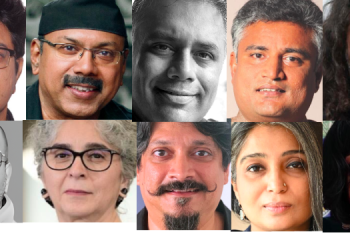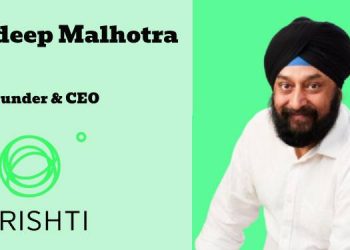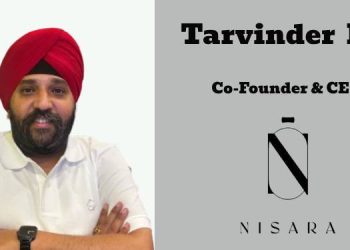CREATE is working with a growing roster of storytelling-driven creators in India, and they’re seeing an increasing demand from brands to collaborate with this type of content. This is a hot topic that’s gaining significant attention.
- Storytelling in content creation is the art of weaving narratives into digital content to engage and connect with audiences on a deeper emotional level, rather than just focusing on products or services.
Why:
- Audience preference shift: Consumers, especially Gen Z and millennials, are moving away from transactional content and gravitating toward stories that feel more relatable, authentic, and engaging.
- Higher engagement: Content that tells a story has been shown to generate higher levels of interaction, trust, and long-term brand loyalty.
How:
- Influencer-led storytelling: Creators are using personal experiences, behind-the-scenes glimpses, and real-life narratives to craft content that resonates with their followers, aligning with brand values in a way that feels natural and organic.
- Data-driven strategies: Brands are increasingly working with influencers who specialise in storytelling, using analytics to fine-tune campaigns that focus on emotional connections over mere product promotions.
Medianews4u.com caught up with Avi Chanoida and Piyush Agarwal, Co-Founders, CREATE
Q. As brands shift to a performance-driven model, influencers are facing increasing pressure to deliver sales and leads instead of just engagement. How is this shift going to impact the environment and market in 2025?
As brands move towards a more performance-driven model, influencers are facing increasing pressure to deliver not just engagement, but actual sales and leads.
While it’s true that influencers can drive sales in certain scenarios, expecting them to consistently deliver sales can be unfair, particularly for brands that don’t fully understand the needs of influencers and the nuances of performance marketing.
Smart brand managers know how to use both performance marketing and influencers effectively. Influencers play a crucial role in building brand recall and showcasing the real-world use cases of products, which can have a lasting impact on consumer perception.
When a brand aims to build its image and create authentic connections with its audience, influencers are much more effective than merely focusing on driving immediate sales. Expecting influencers to be responsible for driving direct sales is, in many cases, unrealistic.

Q. Margins for influencer marketing agencies are being increasingly squeezed. How is CREATE handling this?
Many influencer marketing agencies are seeing their margins squeezed because they mainly act as middlemen—simply taking brand requirements, negotiating with influencers, and delivering the output. At CREATE, we differentiate ourselves by going beyond just connecting the dots.
We add significant creative value by shaping the content and collaborating with brands on how to leverage influencers effectively. We also push influencers to create high-quality content tailored to the brand’s needs.
By adding value at each stage of the process, we ensure that brands see the impact of our work and are willing to pay higher agency fees. Agencies that only act as intermediaries without adding meaningful value will find it increasingly difficult to maintain profitable margins.
Q. Is it now imperative to use data to demonstrate actual ROI or risk falling behind?
Yes, data has become essential. To effectively gauge the impact of influencer marketing, it’s important to track key metrics, such as how many people have seen the influencer’s content and whether it aligns with your target demographic.
Platforms like Instagram, YouTube, and other social media tools provide the data needed to back up these insights. Without utilising this data, brands risk falling behind in a performance-driven market.
Q. Could you talk about work done recently with companies like CRED, Farmly, and Headout that stands out?
Recently, we’ve worked on some exciting campaigns with these brands, each of which stands out for different reasons.
With Farmly, we collaborated with 6-10 content creators who are skilled in storytelling. Instead of just asking influencers to praise the snacks, Farmly took a unique approach by integrating their product into the creators’ personal stories.
This not only made the content more authentic but also resonated deeply with the audience. The campaign was well-received, with many praising the innovative way Farmly approached influencer marketing.
For Headout, we curated a list of creators who frequently travel abroad and have built trust with their audiences in India regarding outstation travel. Our goal was to create awareness about the Headout platform and build trust within the Indian market. Using data and target demographic mapping, we ensured that the creators reached the right audience, boosting credibility and awareness for the brand.
With CRED, we’ve been consistently helping them amplify their new product launches. We work with influencers across Twitter, Instagram, and LinkedIn to ensure their messages reach a wider audience, effectively spreading the word about their latest offerings.

Q. Has the ‘India’s Got Latent’ controversy forced brands to relook at their influencer marketing strategy?
We don’t think the “India’s Got Latent” controversy has had a significant impact on influencer marketing, at least based on our anecdotal experience. The brands and creators we’ve worked with haven’t raised the issue in our discussions.
While the creators directly involved in the controversy may have experienced a dip in brand endorsements, as an industry, we haven’t seen any major ripple effects. Of course, this is based on our specific experience, and we might be mistaken, but anecdotally, we haven’t observed any downturn in the industry following that incident.
Q. Another issue is influencers not conforming to guidelines and declaring paid associations. What should be the way forward?
One challenge in influencer marketing today is the inconsistency in disclosing paid collaborations. While we ensure that the creators we work with follow ASCI guidelines and disclose paid partnerships, it often depends on the approach of individual influencers.
Ethical influencers typically prioritise transparency and will request that brands allow them to disclose paid relationships. However, there are instances where some influencers may not fully disclose, especially if the brand doesn’t emphasise it.
It’s important to recognise that the responsibility for proper disclosure ultimately lies with both the influencers and the brands. Brands play a key role in setting expectations and guiding influencers, so they should make sure the proper disclosures are made. By creating clearer guidelines and ensuring accountability on both sides, the influencer marketing ecosystem can foster more transparency and trust moving forward.

Q. With the pressure to show actual ROI is it imperative for brands to spend time on choosing the right influencer and on deciding if it should be a micro or a macro influencer?
With the growing pressure to show actual ROI, it’s crucial for brands to spend time carefully choosing the right influencers, whether micro or macro, for our campaigns. From our experience, many brands treat influencer marketing as an afterthought, rushing to find influencers with tight turnaround times of just a few days. In such scenarios, the agency and influencers are unlikely to deliver optimal results, and selecting the right influencers becomes difficult.
If brands can allocate at least two to three weeks to thoughtfully select influencers, they allow time for agencies and creators to craft the best possible content.
This extra time also enables the brand to analyse key data metrics to ensure they’re selecting influencers who align with their campaign goals and target audience. By investing time in the right planning and selection process, we can achieve better results and improve the effectiveness of our influencer partnerships.
Q. To measure ROI in influencer marketing what are some of the tools that have come in?
To measure ROI in influencer marketing, many brands rely on various tools, but in our experience, these tools are often not entirely reliable. Since the data they provide is controlled by social media platforms, it can become inaccurate over time.
Instead, we recommend focussing on data directly from platforms like Instagram and YouTube, as well as metrics from your website such as traffic, sales, or clicks on specific links. These sources offer a more accurate picture of campaign performance compared to third-party tools, making them a more reliable way to measure the success of influencer marketing efforts.
Q. How challenging is it to create digital content to engage and connect with audiences on a deeper emotional level, rather than just focusing on products or services? Do analytics play a crucial role in this for CREATE?
Creating digital content that engages audiences on a deeper emotional level, rather than just focusing on products or services, can be quite challenging. From a creative perspective, while analytics play a role, the larger influence comes from the creator themselves.
Often, brands try to dictate exactly how content should be made, which may not align with how the creator organically creates content. When brands interfere too much in the creative process, it can lead to lower engagement and a reduced emotional connection with the audience.
However, when brands allow creators the freedom to express themselves and create content in their own unique style, the emotional connection becomes much stronger. The messaging feels more authentic, and as a result, the audience is more likely to connect on a personal level.
In this approach, while analytics are important, giving creators creative freedom is key to fostering deeper engagement and a more meaningful connection with the audience.

Q. When CREATE pairs influencers with brands do the number or quality of followers matter more?
When CREATE pairs influencers with brands, the importance of the number versus the quality of followers really depends on the brand’s goals. If a brand is focussed on reaching a broad audience and prioritises numbers, then working with influencers who have a larger following makes sense.
However, we’ve seen that sometimes quality can outweigh quantity. For example, if a finance brand wants to promote a product, a smaller creator with 50K-60K followers who has a highly engaged and niche finance community might deliver better results than a larger creator with 500K followers who doesn’t have the same level of expertise or connection with a finance-focussed audience.
Ultimately, if the brand is seeking broad awareness, influencers with larger followings may be the right choice. But for a more targetted impact within a specific niche, smaller creators with a highly engaged and relevant audience can often be more effective.

















